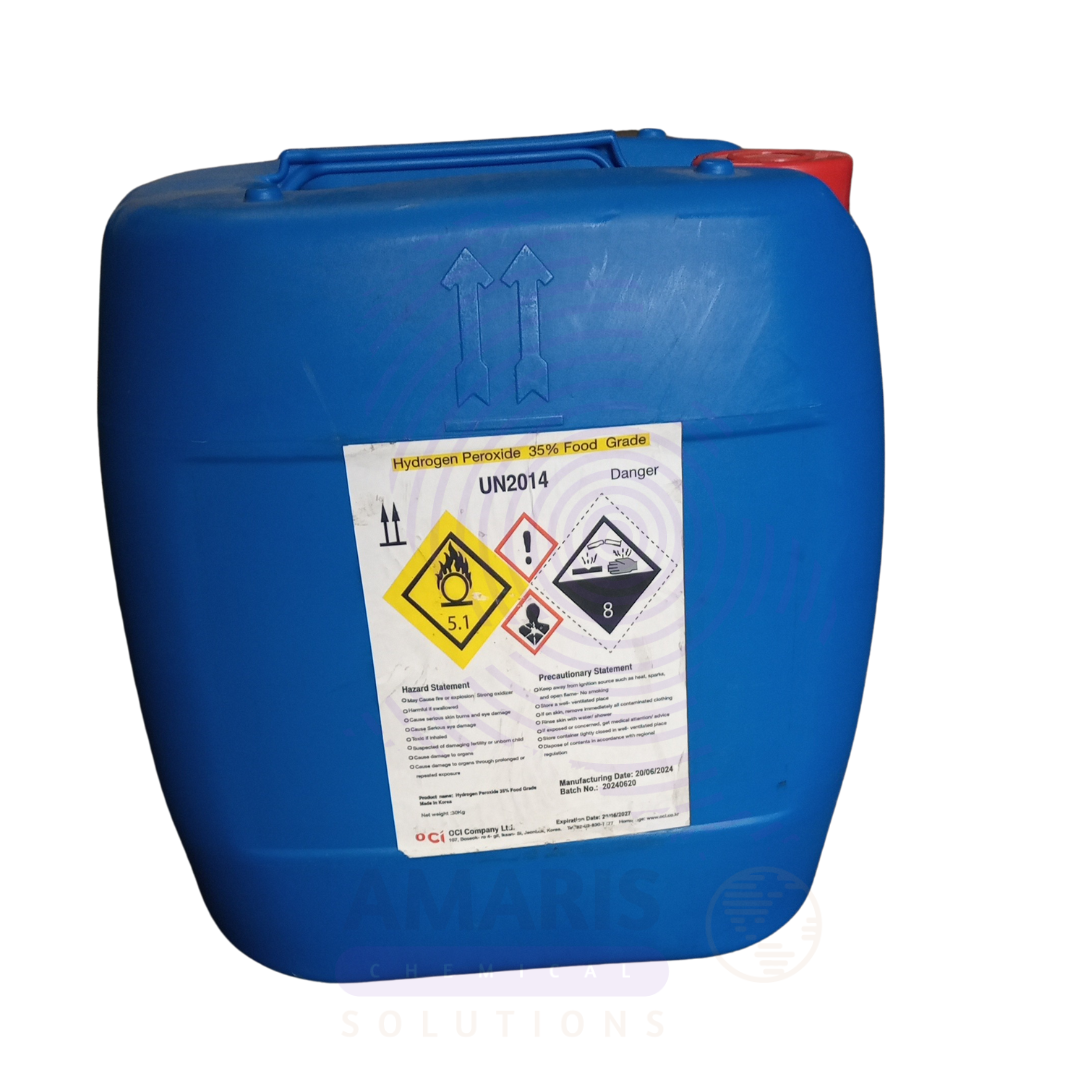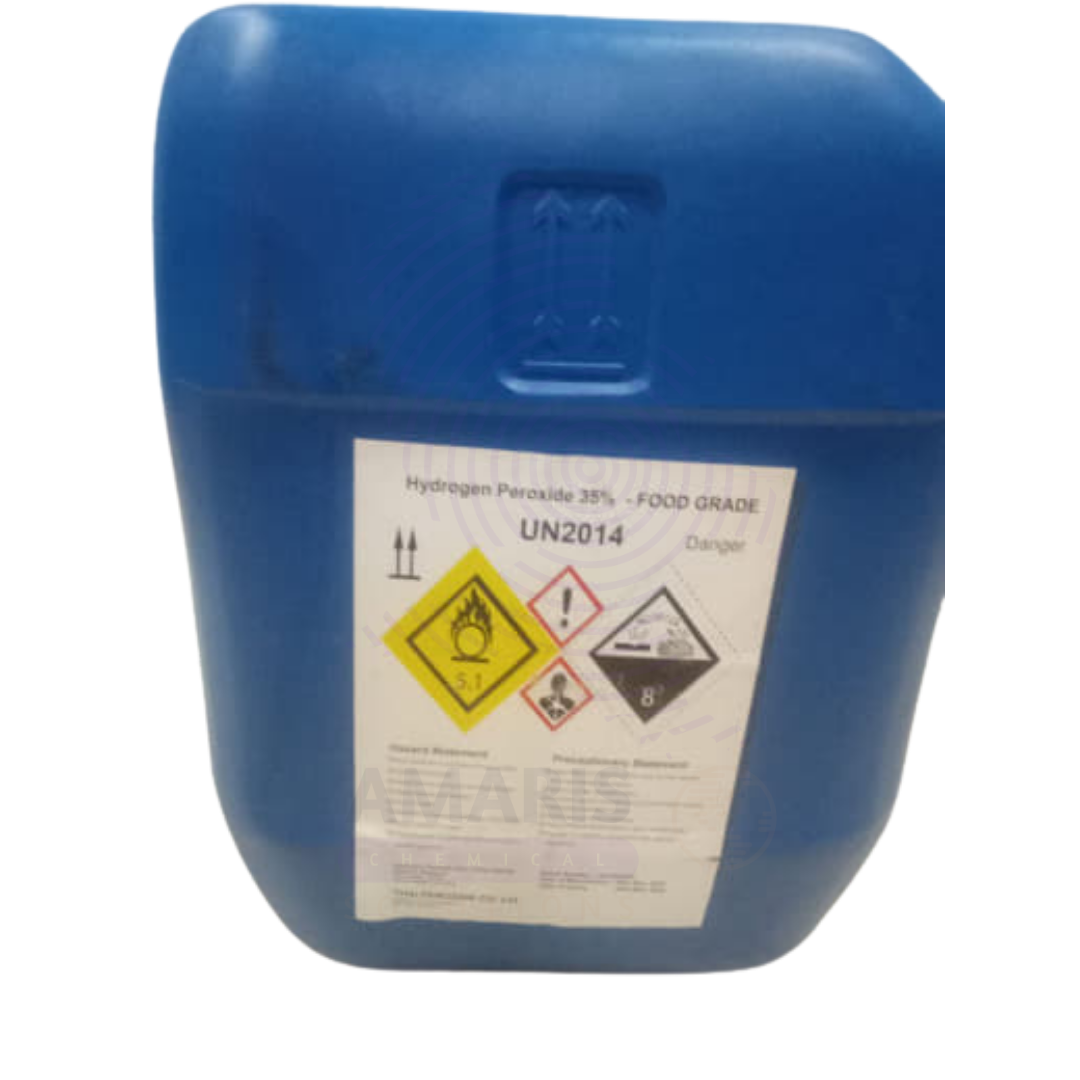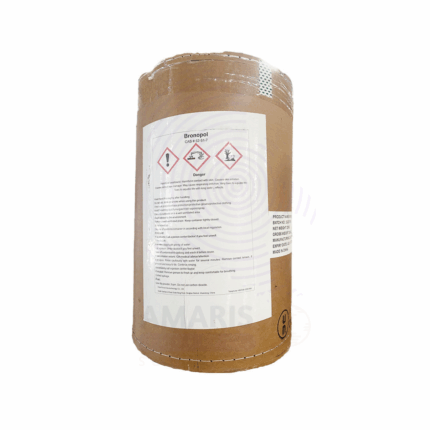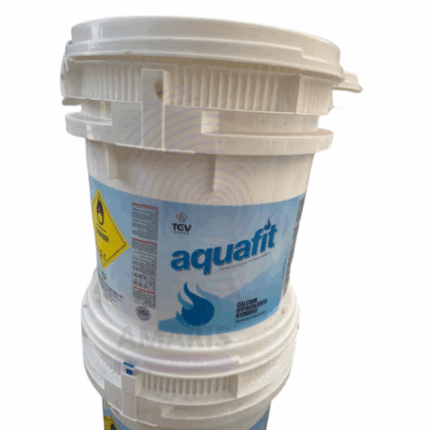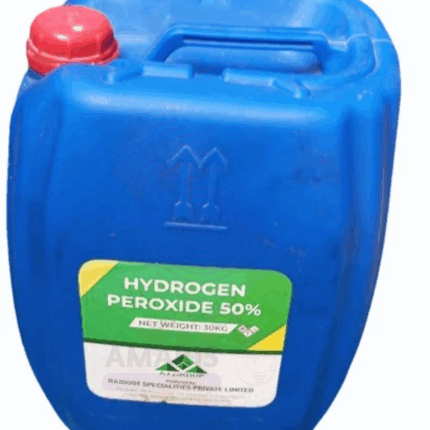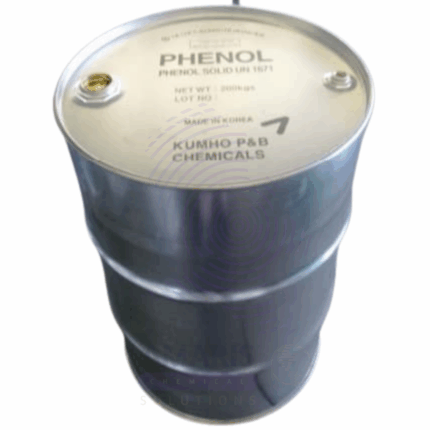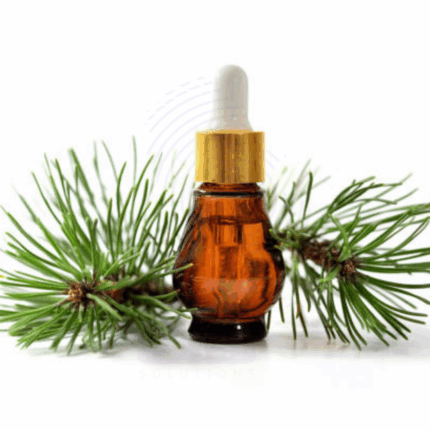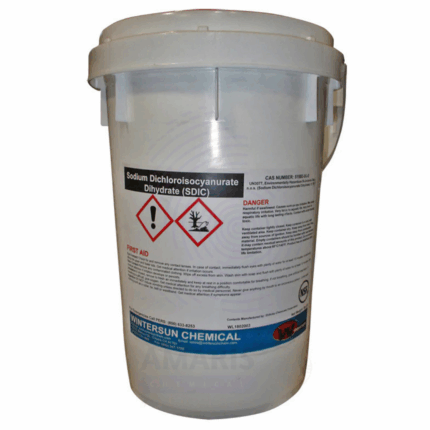

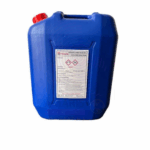
Hydrofluoric Acid
$ 7.90 Original price was: $ 7.90.$ 7.74Current price is: $ 7.74.
Hydrogen Peroxide Food Grade
$ 1.55 Original price was: $ 1.55.$ 1.44Current price is: $ 1.44.
Whatsapp Order
Hydrogen Peroxide Food Grade is a highly concentrated aqueous solution of hydrogen peroxide (H₂O₂), formulated specifically for use in food processing and related applications. It appears as a clear, colorless liquid with a slightly sharp, acrid odor. Renowned for its powerful oxidizing and bleaching properties, hydrogen peroxide is a strong antimicrobial agent and environmentally friendly disinfectant that decomposes into water and oxygen, leaving no harmful residues. The food-grade designation ensures compliance with strict purity standards, making it suitable for direct and indirect food contact uses, including sterilization, sanitation, and preservation.
Description
Table of Contents
Toggle
Hydrogen Peroxide Food Grade
Primary Uses
- Food Industry
- Sanitization and Disinfection: Used extensively for sterilizing food contact surfaces, equipment, and packaging materials to reduce microbial contamination and extend shelf life without chemical residues.
- Food Preservation: Employed as a bleaching and oxidizing agent in processing flour, cheese, and other food products to improve texture, color, and shelf stability.
- Bottle and Packaging Sterilization: Vital in aseptic packaging processes to sanitize containers and ensure product safety, especially for dairy, beverages, and liquid foods.
- Washing Agent: Used to sanitize fruits, vegetables, and other raw food materials by reducing microbial load and removing pesticide residues.
- Dairy Processing: Used in cleaning-in-place (CIP) systems for sterilization of milking equipment and dairy processing lines to prevent spoilage and contamination.
- Pharmaceutical and Cosmetic Industries
- Utilized in the production and sterilization of pharmaceutical products and personal care items, ensuring microbial control while complying with food-grade safety standards.
- Water Treatment
- Applied for disinfection and oxidation of drinking water and wastewater in food production facilities to maintain hygiene and comply with regulatory standards.
- Agriculture
- Used for seed treatment and crop sanitation to reduce fungal and bacterial pathogens, promoting healthier growth and yield.
Secondary Uses
- Textile Industry
- Used as a bleaching and disinfecting agent in the production of food-grade textiles such as packaging fabrics and food wrapping materials.
- Laboratory Applications
- Employed as an oxidizing agent and sterilizer in microbiology and food safety testing laboratories.
- Cleaning and Maintenance
- Used in sanitary cleaning agents for food processing plants, hospitals, and other sensitive environments requiring residue-free disinfection.
Additional information
| PACK SIZE |
30kg |
|---|
KEY PRODUCT FEATURES
1. Basic Identification Attributes
- Chemical Name (IUPAC): Hydrogen peroxide (aqueous solution)
- Common/Trade Name: Hydrogen Peroxide 35% Food Grade
- CAS Number: 7722-84-1
- HS Code: 2847.00.00
- Molecular Formula: H₂O₂
- Synonyms: Peroxide, Hydrogen peroxide solution, HP 35% FG
2. Physical & Chemical Properties
- Physical State: Clear, colorless liquid
- Odor: Slightly sharp, acrid
- Boiling Point: Approximately 108 °C (decomposes before boiling)
- Density: ~1.13 g/cm³ (35% concentration)
- Solubility: Miscible with water
- pH: Slightly acidic (typically 3.5 to 4.5)
- Stability: Decomposes slowly releasing oxygen; stabilized with trace amounts of inhibitors
3. Safety & Hazard Attributes
- GHS Classification:
- Oxidizing liquid: Category 1
- Skin corrosion/irritation: Category 1B
- Serious eye damage/eye irritation: Category 1
- Toxicity: Moderate irritant; harmful if swallowed or in contact with skin/eyes
- Exposure Limits: OSHA PEL 1 ppm (Ceiling) for vapor (varies with jurisdiction)
4. Storage & Handling Attributes
- Container Type: High-density polyethylene (HDPE) or stainless steel containers
- Storage Conditions: Store in cool, ventilated, shaded areas away from direct sunlight, heat, and incompatible materials such as organic substances and metals
- Shelf Life: Typically 6-12 months under recommended storage
- Handling Notes: Use with adequate ventilation; avoid contact with combustible materials
5. Regulatory & Compliance Attributes
- Complies with FDA and other food safety regulatory standards for food-grade hydrogen peroxide
- Approved for direct and indirect contact with food processing and packaging equipment
- Registered and monitored under relevant chemical safety laws (REACH, OSHA, EPA)
6. Environmental & Health Impact
- Biodegradability: Breaks down rapidly into water and oxygen, environmentally friendly
- Ecotoxicity: Low toxicity to aquatic organisms at typical use concentrations
- Bioaccumulation: Not expected to bioaccumulate
- Carcinogenicity/Mutagenicity: Not classified
SAFETY HANDLING PRECAUTIONS
Safety Handling Precautions
- PPE Required: Chemical-resistant gloves, safety goggles, face shield, protective apron
- Handling Guidelines: Use in well-ventilated areas; avoid inhalation of vapors and contact with skin or eyes; do not mix with incompatible substances such as organic materials or strong reducing agents
- Hygiene Practices: Wash hands thoroughly after handling; no eating or smoking in handling areas
First Aid Measures
- Inhalation: Move affected person to fresh air; seek medical attention if symptoms persist
- Skin Contact: Rinse immediately with plenty of water for at least 15 minutes; remove contaminated clothing; seek medical advice if irritation occurs
- Eye Contact: Flush eyes with water for at least 15 minutes; seek immediate medical attention
- Ingestion: Do not induce vomiting; rinse mouth and seek medical help immediately
Firefighting Measures
- Fire Hazards: Not flammable but supports combustion of other materials; can increase fire intensity
- Extinguishing Media: Use water spray, foam, or dry chemical; avoid using combustible materials for extinguishing
- Special Precautions: Firefighters should wear full protective gear and self-contained breathing apparatus
- Decomposition Products: Oxygen gas and water vapor, may accelerate burning of other materials
Related products
Ammonium Cupric Chloride
Ammonium Cupric Chloride is a blue-green crystalline inorganic compound composed of copper, ammonium, and chloride ions. It is widely used as a source of copper in agricultural fungicides and bactericides, as well as in electroplating, chemical synthesis, and textile dyeing. Its antimicrobial properties make it valuable for controlling fungal and bacterial infections in plants. Additionally, it serves as a precursor in various industrial and laboratory applications.
Bronopol
Bronopol (2-Bromo-2-nitropropane-1,3-diol) is a water-soluble, white crystalline powder or granules with a slight odor. It is a synthetic antimicrobial agent widely used as a preservative in personal care products, pharmaceuticals, cosmetics, and industrial applications. Bronopol exhibits broad-spectrum bactericidal and fungicidal activity, making it effective against a wide range of microorganisms. It works by releasing active formaldehyde slowly, which disrupts microbial metabolism and reproduction.
Calcium Hypochlorite
Calcium Hypochlorite Chlorine is a white to slightly yellow crystalline powder or granules known for its strong oxidizing and disinfectant properties. The 65% grade indicates the available chlorine content, making it a powerful bleaching, sanitizing, and oxidizing agent. It is commonly used for water treatment, sanitation, and as a bleaching agent in industrial and household applications. Calcium Hypochlorite dissolves in water to release hypochlorous acid, which effectively kills bacteria, viruses, and fungi.
Hydrogen Peroxide Tech Grade
Hydrogen Peroxide Tech Grade is a highly concentrated aqueous solution of hydrogen peroxide (H₂O₂) designed primarily for industrial and technical applications. It is a clear, colorless liquid with a sharp, acrid odor. Known for its strong oxidizing, bleaching, and disinfecting properties, this tech-grade formulation is typically used where high reactivity is required, often in non-food processes. It decomposes into environmentally benign by-products—water and oxygen—making it a preferred agent for sustainable industrial processes.
Phenol Ice Crystals
Phenol Ice Crystals, also known as carbolic acid in solid form, are crystalline compounds of phenol with a melting point near room temperature, giving them an “ice-like” appearance. Phenol is a aromatic organic compound widely used as a precursor in chemical synthesis, disinfectants, and pharmaceuticals. It exhibits antiseptic, antiseptic, and solvent properties. Due to its toxicity and corrosiveness, phenol requires careful handling.
Pine Oil
Pine Oil is a powerful, aromatic essential oil obtained through the steam distillation of the needles, twigs, and cones of pine trees, primarily Pinus sylvestris or other Pinus species. It features a sharp, woody, and fresh scent with natural disinfectant and deodorizing properties. Rich in monoterpenes such as alpha-pinene and beta-pinene, Pine Oil is widely utilized in cleaning products, disinfectants, air care, cosmetics, and industrial formulations. It is valued for its antimicrobial, anti-inflammatory, and degreasing capabilities, making it an effective multi-purpose ingredient across various sectors.
Sasol Phenol
Sasol Phenol is a high-purity, industrial-grade phenol produced by Sasol, widely used as a key raw material in the manufacture of plastics, resins, and chemicals. Phenol is an aromatic organic compound characterized by a hydroxyl group (-OH) attached to a benzene ring. It serves as a precursor in producing bisphenol A, caprolactam, and phenolic resins. Sasol Phenol is known for its consistent quality, purity, and suitability for diverse industrial applications including chemical synthesis, pharmaceuticals, and adhesives.
Sodium Dichloroisocyanurate
Sodium Dichloroisocyanurate (NaDCC) is a white crystalline powder used primarily as a disinfectant, sanitizer, and biocide. It is a stable, slow-releasing chlorine compound effective against bacteria, viruses, and fungi. Widely applied in water treatment, swimming pool sanitation, food processing, and healthcare, it provides long-lasting antimicrobial activity. Its high chlorine content and ease of handling make it an essential chemical for hygiene and sterilization applications.


 Preservatives(food)
Preservatives(food) Flavor Enhancers
Flavor Enhancers Acidulants
Acidulants Sweeteners
Sweeteners Antioxidants
Antioxidants Colorants(food)
Colorants(food) Nutraceutical Ingredients (food)
Nutraceutical Ingredients (food) Nutrient Supplements
Nutrient Supplements Emulsifiers
Emulsifiers
 Collectors
Collectors Dust Suppressants
Dust Suppressants Explosives and Blasting Agents
Explosives and Blasting Agents Flocculants and Coagulants
Flocculants and Coagulants Frothers
Frothers Leaching Agents
Leaching Agents pH Modifiers
pH Modifiers Precious Metal Extraction Agents
Precious Metal Extraction Agents
 Antioxidants(plastic)
Antioxidants(plastic) Colorants (Pigments, Dyes)
Colorants (Pigments, Dyes) Fillers and Reinforcements
Fillers and Reinforcements Flame Retardants
Flame Retardants Monomers
Monomers Plasticizers
Plasticizers Polymerization Initiators
Polymerization Initiators Stabilizers (UV, Heat)
Stabilizers (UV, Heat)
 Antifoaming Agents
Antifoaming Agents Chelating Agents
Chelating Agents Coagulants and Flocculants
Coagulants and Flocculants Corrosion Inhibitors
Corrosion Inhibitors Disinfectants and Biocides
Disinfectants and Biocides Oxidizing Agents
Oxidizing Agents pH Adjusters
pH Adjusters Scale Inhibitors( water)
Scale Inhibitors( water)
 Antioxidants(cosmetic)
Antioxidants(cosmetic) Emollients
Emollients Fragrances and Essential Oils
Fragrances and Essential Oils Humectants
Humectants Preservatives
Preservatives Surfactants(cosmetic)
Surfactants(cosmetic) Thickeners
Thickeners UV Filters
UV Filters
 Fertilizers
Fertilizers Soil Conditioners
Soil Conditioners Plant Growth Regulators
Plant Growth Regulators Animal Feed Additives
Animal Feed Additives Biostimulants
Biostimulants Pesticides (Herbicides, Insecticides, Fungicides)
Pesticides (Herbicides, Insecticides, Fungicides)
 Active Pharmaceutical Ingredients (APIs)
Active Pharmaceutical Ingredients (APIs) Excipients
Excipients Solvents(pharmaceutical)
Solvents(pharmaceutical) Antibiotics
Antibiotics Antiseptics and Disinfectants
Antiseptics and Disinfectants Vaccine Adjuvants
Vaccine Adjuvants Nutraceutical Ingredients (pharmaceutical)
Nutraceutical Ingredients (pharmaceutical) Analgesics & Antipyretics
Analgesics & Antipyretics
 Analytical Reagents
Analytical Reagents Solvents(lab)
Solvents(lab) Chromatography Chemicals
Chromatography Chemicals Spectroscopy Reagents
Spectroscopy Reagents microbiology-and-cell-culture-reagents
microbiology-and-cell-culture-reagents Molecular Biology Reagents
Molecular Biology Reagents Biochemical Reagents
Biochemical Reagents Inorganic and Organic Standards
Inorganic and Organic Standards Laboratory Safety Chemicals
Laboratory Safety Chemicals Specialty Laboratory Chemicals(Special Laboratory Equipment)
Specialty Laboratory Chemicals(Special Laboratory Equipment)
 Demulsifiers
Demulsifiers Hydraulic Fracturing Fluids
Hydraulic Fracturing Fluids Scale Inhibitors(oil)
Scale Inhibitors(oil) Surfactants(oil)
Surfactants(oil) Drilling Fluids
Drilling Fluids
 Dyes and Pigments
Dyes and Pigments Bleaching Agents
Bleaching Agents Softening Agents
Softening Agents Finishing Agents
Finishing Agents Antistatic Agents
Antistatic Agents
 Admixtures
Admixtures Waterproofing Agents
Waterproofing Agents Sealants and Adhesives
Sealants and Adhesives Curing Compounds
Curing Compounds Concrete Repair Chemicals
Concrete Repair Chemicals Anti-Corrosion Coatings
Anti-Corrosion Coatings
 Surfactants(cleaning)
Surfactants(cleaning) Builders
Builders Enzymes
Enzymes Solvents (Cleaning)
Solvents (Cleaning) Fragrances
Fragrances
 Electronic Chemicals
Electronic Chemicals Catalysts
Catalysts Lubricants
Lubricants Photographic Chemicals
Photographic Chemicals Refrigerants
Refrigerants Automotive chemicals
Automotive chemicals Pyrotechnic Chemicals
Pyrotechnic Chemicals
 Biodegradable Surfactants
Biodegradable Surfactants Bio-based Solvents
Bio-based Solvents Renewable Polymers
Renewable Polymers Carbon Capture Chemicals
Carbon Capture Chemicals Wastewater Treatment Chemicals
Wastewater Treatment Chemicals
 Pigments
Pigments Solvents(paint)
Solvents(paint) Specialty Coatings
Specialty Coatings Binders/Resins
Binders/Resins Additives
Additives Driers
Driers Anti-Corrosion Agents
Anti-Corrosion Agents Functional Coatings
Functional Coatings Application-Specific Coatings
Application-Specific Coatings
 Fresh Herbs
Fresh Herbs Ground Spices
Ground Spices Whole Spices
Whole Spices Spice Blends
Spice Blends Dried Herbs
Dried Herbs
 Leavening Agents
Leavening Agents Dough Conditioners
Dough Conditioners Flour Treatments
Flour Treatments Fat Replacers
Fat Replacers Decoratives
Decoratives Preservatives(baking)
Preservatives(baking)
 Plasticizers & Softeners
Plasticizers & Softeners Reinforcing Agents
Reinforcing Agents Adhesion Promoters
Adhesion Promoters Vulcanizing Agents
Vulcanizing Agents Antidegradants
Antidegradants Blowing Agents
Blowing Agents Fillers & Extenders
Fillers & Extenders Accelerators & Retarders
Accelerators & Retarders